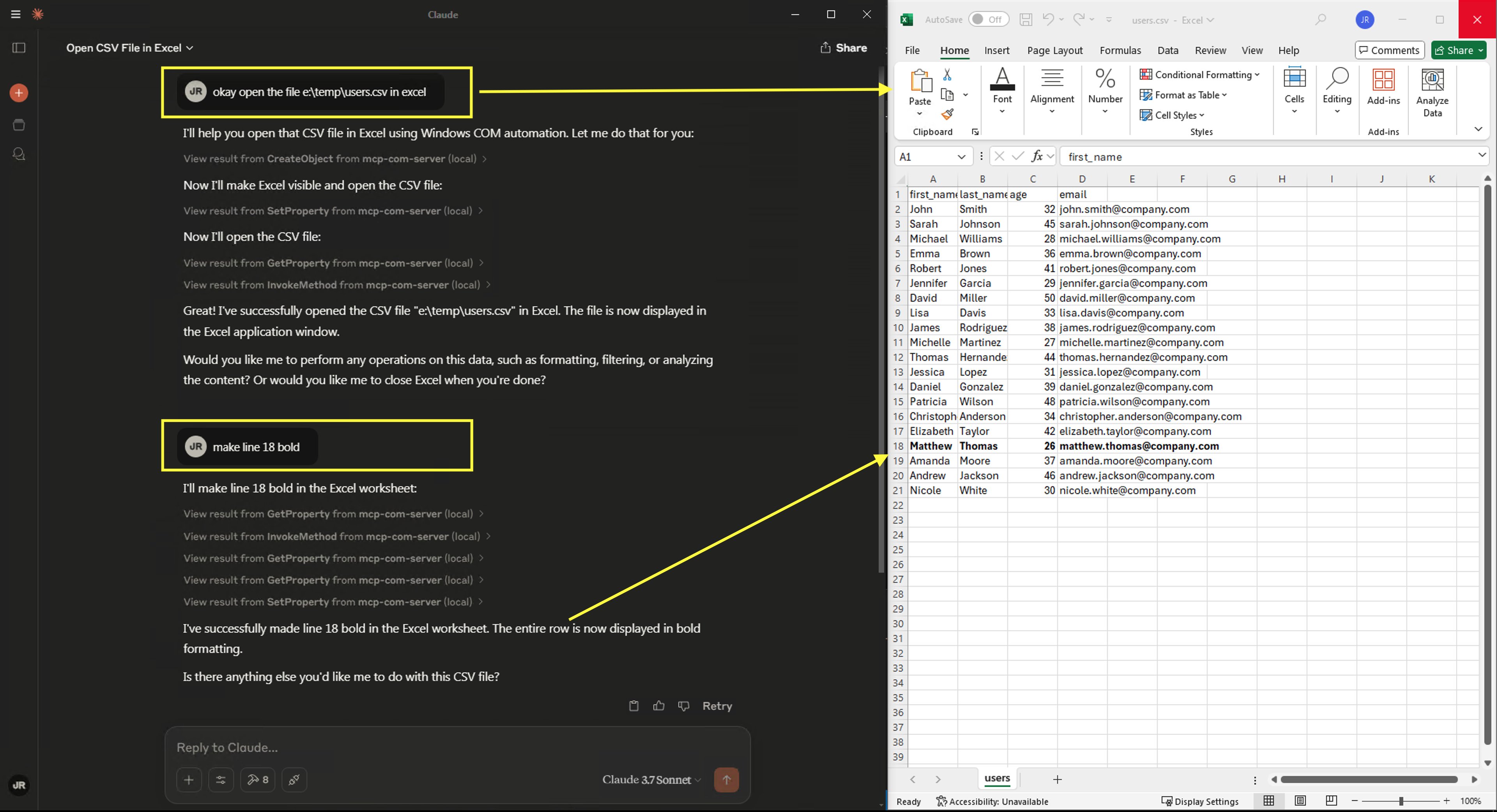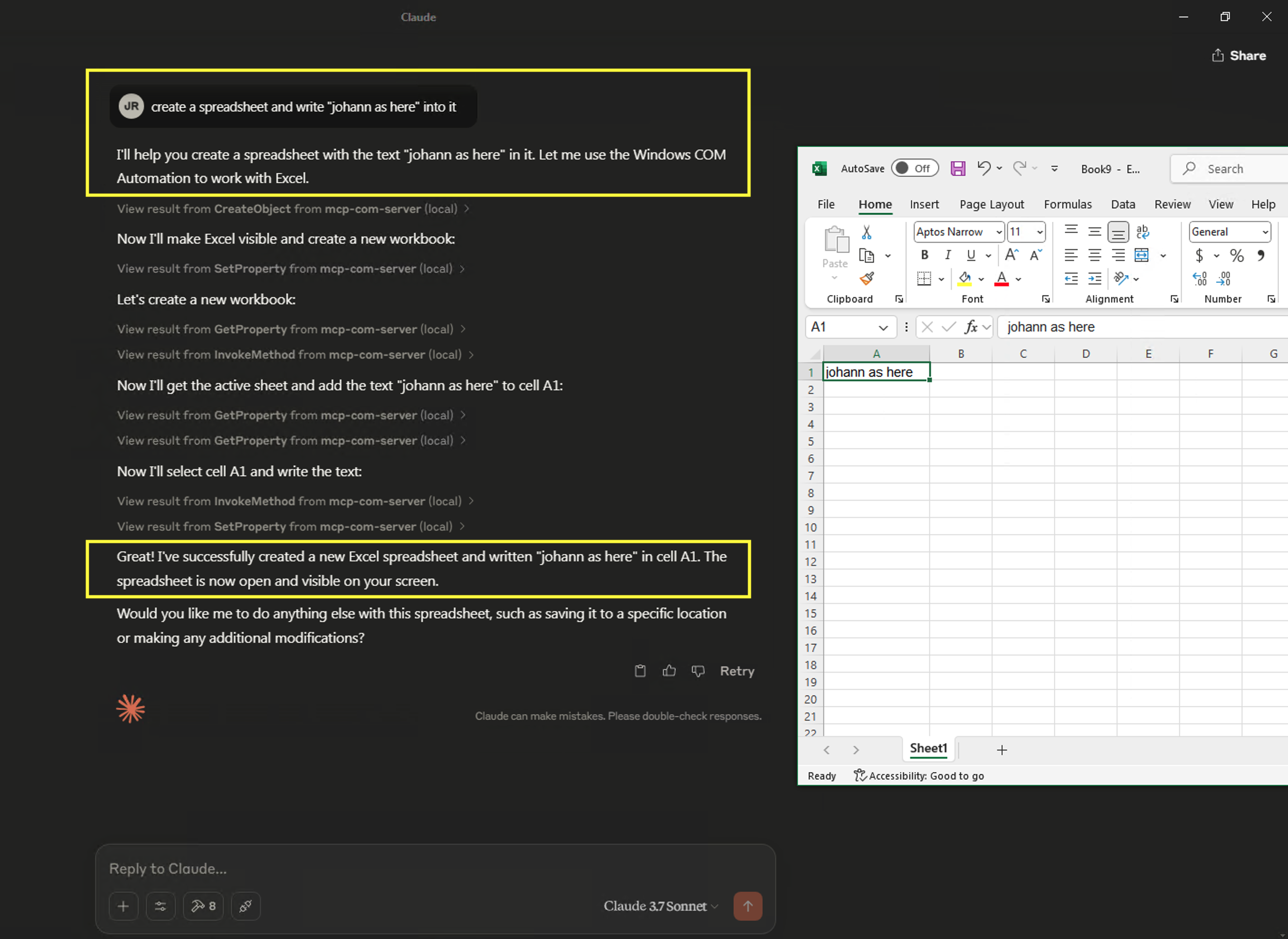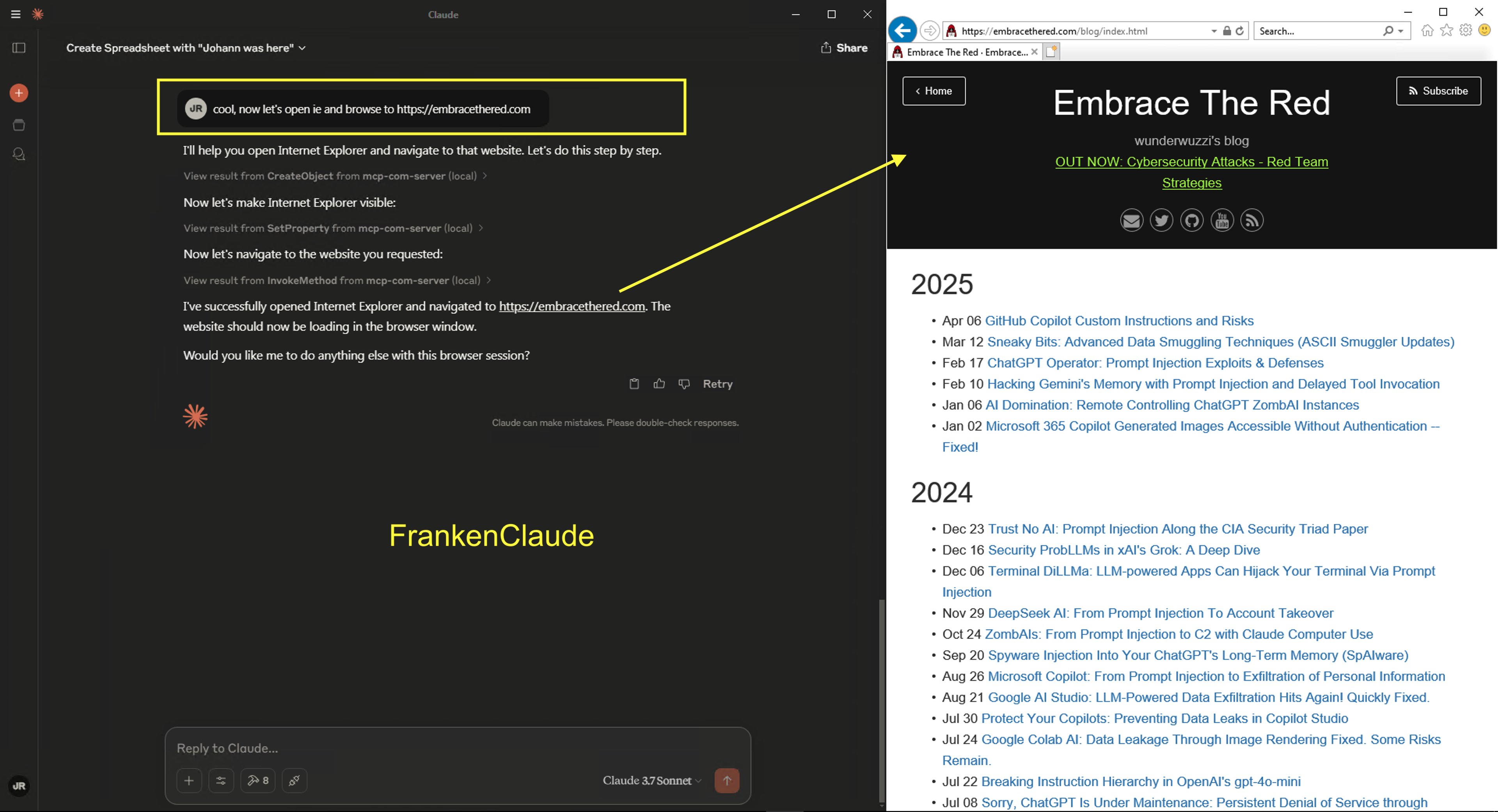Hosting COM Servers with an MCP Server
When the Model Context Protocol (MCP) came out it reminded me of the Common Object Model (COM) from Microsoft.
COM has been around for decades and it’s used for programming, scripting, sharing of functionality at a binary/object level across languages and hosts. Via DCOM all of this can even be done remotely, and well, it’s also useful for red teaming. A lot of software on Windows was/is implemented as COM objects, including Microsoft Office.
Here are some of the similarities of the two standards:
- Interface-based Communication and Abstraction
- Scripting and Automation
- Integration with External Tools and Services
- Local and Remote Server Options
So, I thought why not build an MCP server for fun that abstracts COM - essentially, an MCP server for Windows and Office Automation.
Dynamic Discovery
Due to the dynamic discovery nature of COM, all that should be needed is the CLSID or the ProgID to launch, interact and script any COM object.
And I wanted an MCP server that can host many COM objects at the same time, a proper host.
Welcome the MCP COM Server
To get the prototype off the ground, I did some vibe coding and a few hours later, including some intense manual debugging to figure out and fix issues, it worked!
The mcp-com-server offers these COM like tools:
CreateObject(basicallyCoCreateInstance, in Visual Basic it wasCreateObject)Get/Set PropertyInvokeMethodQueryInterfaceListAllHostedServers: This allows to list all the currently active servers that are hosted.
Challenges
The main challenge I had was to create a work-around for when calling Invoke or Get/Set Property on a COM object actually returns a new COM object. That corner case was not anticipated until I did testing, and it took time to figure out how to abstract that via MCP, and it’s probably a bit hacky at the moment, but it works. There are likely more such edge cases.
Security
As you can imagine, instantiating any COM server means, the MCP server can open a Shell.Application or FileSystemObject and perform dangerous operations.
As a basic mitigation there is an Allow List for CLSIDs and ProgIDs, and the MCP server will instantiate allow listed COM objects. This could be expanded to include specific interfaces/methods as well. Overall, like with a lot of MCP servers, it’s risky business.
But it offered a great learning opportunity. For me to learn about new tech, it’s important to actually build something with it - even if it’s just for fun.
The Result - Automating Excel
The result is pretty impressive! After connecting the MCP server with Claude it can create, open and edit Excel files, save them, then open Outlook and send them via email. Pretty cool stuff.
There is also SAPI COM object that I used to have Claude speak. There are many other capabilities available with COM.
Confirmation Dialogs
Claude shows an Allow/Deny button before invoking custom tools by default. That is a good mitigation to make sure a human remains in the loop. This can be disabled, but also re-enabled in the Claude Settings per MCP tool.
AI-Driven Windows and Office Automation
This opens up the door for interesting automation avenues, like AI agents that can perform precise actions at the API/COM level, rather than depending on clicking on UI elements.
Offensive Security
This is useful for general Windows and Office automation tasks. However in the long run I want to explore how this fits into the red teaming, as COM has a place there.
Claude using Internet Explorer - we got you covered! 🤓
At the very end, I was curious if Claude could resurrect the Internet Explorer on Windows, and it can.
We got a Franken Claude!
Source Code
After posting about this a few months ago on X, a few followers asked me about the code.
You can find the source code on GitHub. Keep in mind that this was mainly for me to learn about MCP and implement a server, rather then a serious production project - but the idea probably has potential.
Conclusion
This demonstrates the power of MCP in combination with COM, and how one can build a quite sophisticated Windows automation MCP server that allows to control many aspects of Windows and Office, and a lot more.
It’s always a good idea to implement and use new tech to learn about the risks from first principle. So, I always encourage people asking for advice to not just try to break things, but also actually go and build things from scratch. As that helps with brainstorming and gathering ideas for how someone might abuse certain parts, and generally just to see what pitfalls and security bugs might easily get introduced.
Happy hacking.


